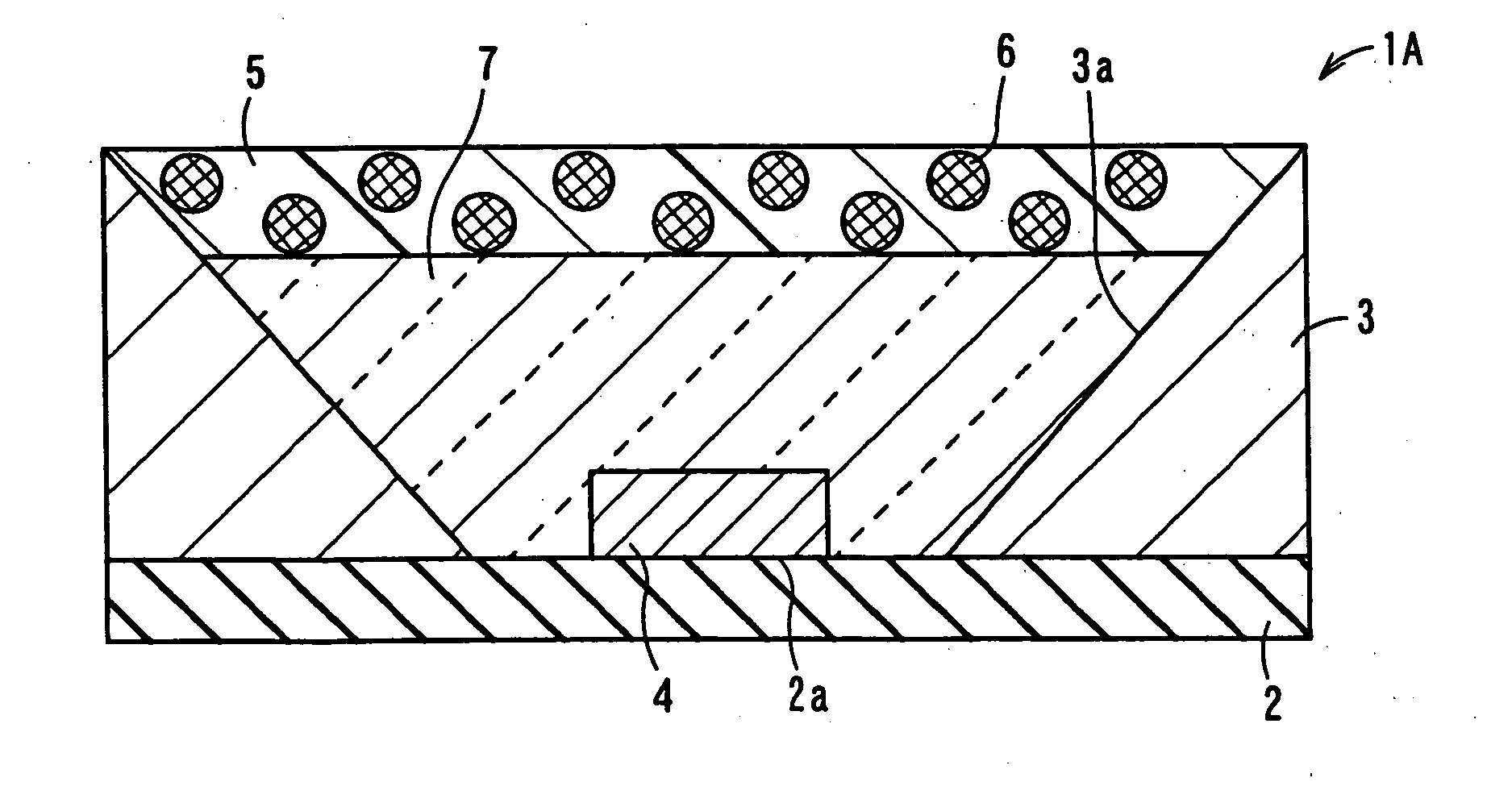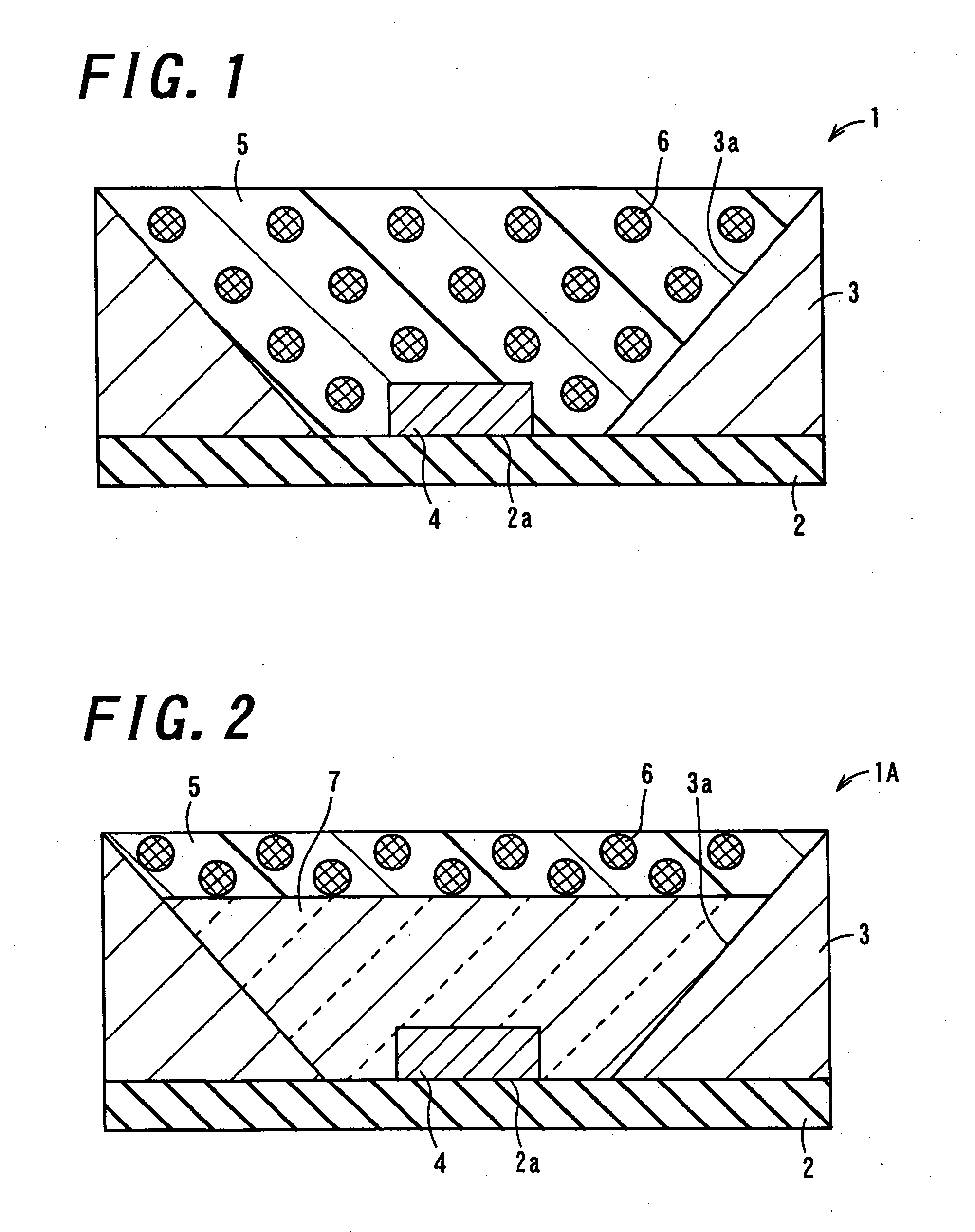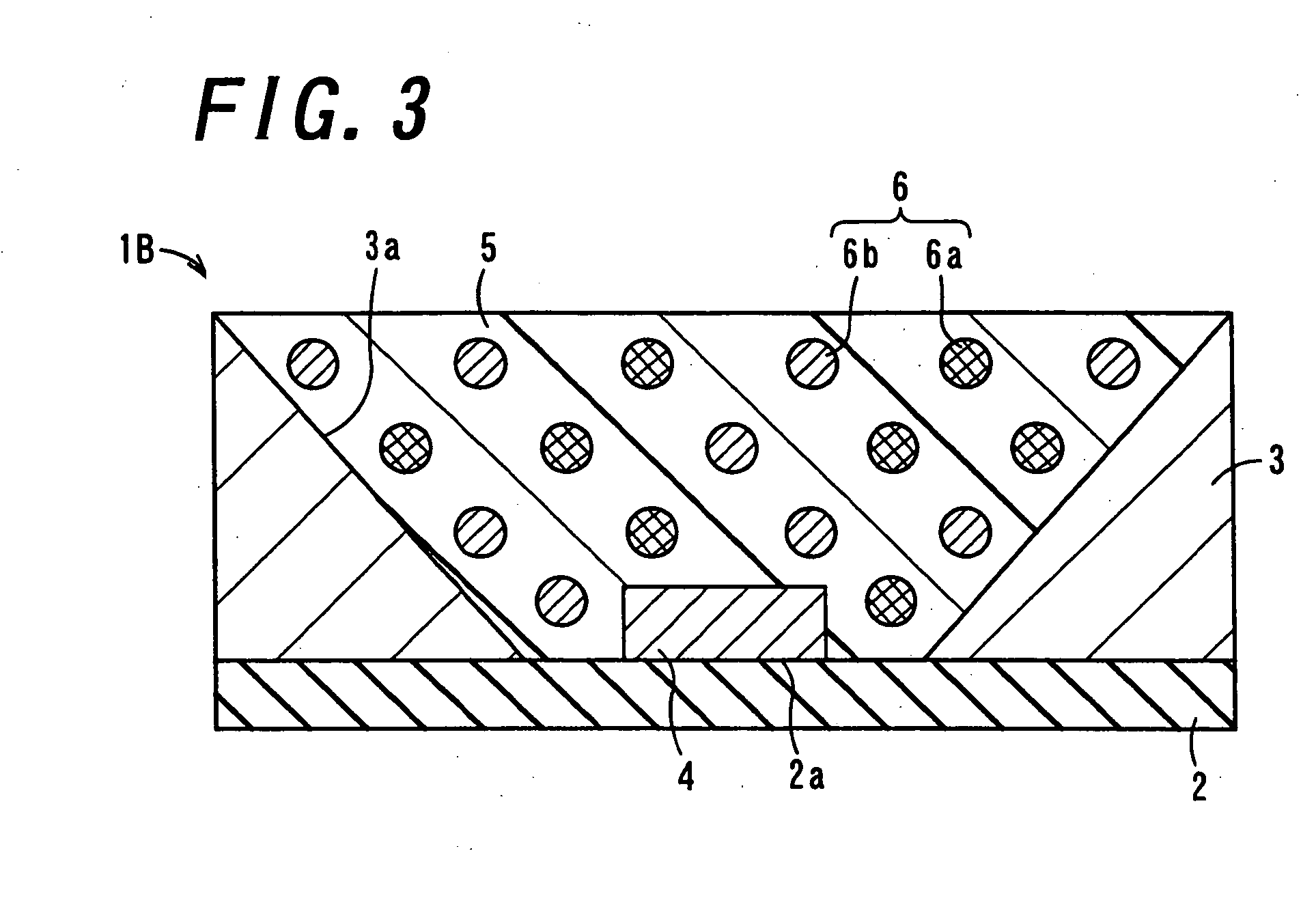Light-emitting apparatus and illuminating apparatus
- Summary
- Abstract
- Description
- Claims
- Application Information
AI Technical Summary
Benefits of technology
Problems solved by technology
Method used
Image
Examples
example 1
[0100] At first, as the base body 2, an alumina ceramics substrate was prepared for use.
[0101] The base body 2 is composed of a rectangular plate which is 3.5 mm in length×3.5 mm in width×0.5 mm in thickness. The base body 2 has, at the center of its top surface, the placement portion 2a for emplacing thereon the light emitting element 4. Moreover, in the base body 2, a wiring conductor composed of a W-made metallized wiring line is so disposed as to extend from the placement portion 2a to the under surface thereof.
[0102] Moreover, the frame body 3 was formed in the shape of a circular cylinder, the dimensions of which are: 3.5 mm in exterior diameter; 1.5 mm in height; 3.3 mm in diameter of upper opening; and 0.5 mm in diameter of lower opening.
[0103] Next, the 0.08 mm-thick light-emitting element 4 for emitting near-ultraviolet light was, at the Au—Sn bump disposed in its electrode, bonded to the wiring conductor. Concurrently, the frame body 3 was joined to the outer periphery...
example 2
[0108] Hereinafter, a description will be given as to example of the light-emitting apparatus 1B of the invention with reference to FIG. 3.
[0109] In the example 2, components configuring the base body 2 and the frame body 3 in the light-emitting apparatus 1B are the same as those used in the example 1.
[0110] In the same way as the example 1, the phosphors 6 for red-color light emission (La2O2S:Eu) have a density of 5.8 g / cm3; those for green-color light emission (BaMgAl10O17:Eu) have a density of 3.8 g / cm3; and those for blue-color light emission (BaMgAl10O17:Eu, Mn) have a density of 3.8 g / cm3. These three different types of the phosphors 6 were blended together so as for the color temperature of light emitted from the light-emitting apparatus 1 to be 6500 K.
[0111] Moreover, as the light transmitting member 5, silicone resin materials of varying pre-cured viscosities, that is; 0.3; 0.4; 1.3; 10; 50; and 55 Pa.s were prepared for use. In each silicone resin material is admixed th...
example 3
[0115] In the example 3, components configuring the base body 2 and the frame body 3 in the light-emitting apparatus are the same as those used in the example 1.
[0116] The phosphors 6 for red-color light emission (La2O2:Eu) have a density of 5.8 g / cm3; those for green-color light emission ((BaMgAl)10O12:Eu, Mn) have a density of 3.8 g / cm3; and those for blue-color light emission ((Sr, Ca, Ba, Mg)10(PO4)6O12:Eu) have a density of 3.8 g / cm3. These three different types of the phosphors 6 were blended together.
[0117] Moreover, as the light transmitting member 5, silicone resin having pre-cured viscosities of 1.7 Pa.s is prepared for use. The silicone resin is vacuum-defoamed in a non-cured state by a vacuum defoamer. To the vacuum-defoamed silicone resin, admixed are the phosphors 6 admixed so as to put out desired visible light therein, so that a volume of the phosphors is 1 / 30, 1 / 24, 1 / 18, 1 / 15, 1 / 12, 1 / 6, 1 / 5 times as much as that of the silicone resin, respectively. In other word...
PUM
 Login to View More
Login to View More Abstract
Description
Claims
Application Information
 Login to View More
Login to View More - R&D
- Intellectual Property
- Life Sciences
- Materials
- Tech Scout
- Unparalleled Data Quality
- Higher Quality Content
- 60% Fewer Hallucinations
Browse by: Latest US Patents, China's latest patents, Technical Efficacy Thesaurus, Application Domain, Technology Topic, Popular Technical Reports.
© 2025 PatSnap. All rights reserved.Legal|Privacy policy|Modern Slavery Act Transparency Statement|Sitemap|About US| Contact US: help@patsnap.com



